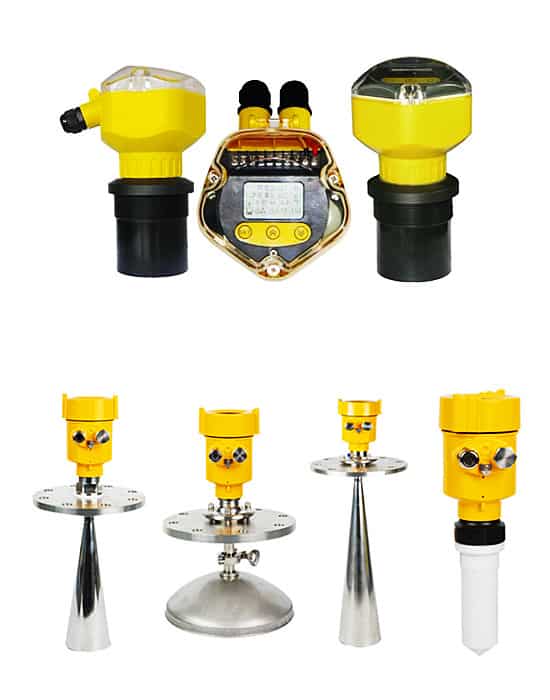Introduction (100 words):

Ultrasonic level transmitters have become an essential tool in many industries for efficient and accurate level measurement. These devices utilize ultrasonic waves to precisely determine the level of liquid or solid substances in tanks or containers. In this blog post, we will explore the working principle of ultrasonic level detectors, discuss their advantages and disadvantages, and examine their applications in various fields. Furthermore, we will compare ultrasonic level measurement with other popular techniques like piezoelectric and radiation-based measurements.
Main Body:
I. Working Principle of Ultrasonic Level Detectors (200 words):
Ultrasonic level detectors operate on the principle of sound wave transmission and reception. The transmitter emits high-frequency ultrasonic pulses (typically ranging from 20 to 200 kHz) towards the target substance contained in a tank. These sound waves travel through the air above the liquid or solid and bounce back off the surface. The receiver then detects the echo of the wave and measures the time taken for it to return. By calculating the time of flight, the distance between the transmitter and the target can be determined. With this data, the level of the substance can be accurately determined.
II. Advantages of Ultrasonic Level Transmitters (200 words):
1. Non-contact Measurement: Ultrasonic transmitters do not require physical contact with the substance being measured, eliminating the risk of contamination or damage to the sensor.
2. Wide Measurement Range: These devices are capable of measuring both short and long distances, making them versatile for various tank sizes.
3. High Accuracy: Ultrasonic level transmitters provide precise and accurate measurements, ensuring reliable inventory control and process monitoring.
4. Easy Installation: These devices are relatively easy to install, typically requiring only a power supply and a mounting bracket.
5. Compatibility with Various Substances: Ultrasonic transmitters can accurately measure a wide range of substances, including liquids, solids, and even powders.
III. Disadvantages of Ultrasonic Level Transmitters (150 words):
1. Limited Application in Certain Environments: Ultrasonic devices might face challenges when used in environments with high levels of dust, vapors, foam, or turbulent conditions, which can affect signal integrity.
2. Sensor Interference: Objects or obstacles in the tank, such as agitators or ladders, can disrupt or reflect the sound waves, resulting in inaccurate measurements.
3. Calibration Requirements: Regular calibration is necessary to maintain accurate readings, as factors like temperature fluctuations can impact the speed of sound in air.
4. Cost: Compared to other level measurement techniques, ultrasonic transmitters can be relatively expensive.
IV. Applications of Ultrasonic Level Transmitters (200 words):
1. Industrial Manufacturing: Ultrasonic level transmitters are extensively used in industries like chemical, food and beverage, pharmaceuticals, and water treatment for inventory control, process optimization, and leak detection.
2. Petrochemical Industry: These devices enable accurate level measurement in tanks containing fuels, oils, and chemicals, ensuring safety and preventing spills or overflows.
3. Waste Water Management: Ultrasonic level transmitters play a crucial role in monitoring the level of sewage or wastewater in treatment plants, facilitating appropriate treatment and avoiding overflow.
4. Agriculture: Farmers utilize ultrasonic transmitters in tanks or silos to monitor the levels of fertilizers, pesticides, or animal feed, ensuring a constant supply for optimal crop or livestock health.
5. Water Management: Ultrasonic level transmitters are used to monitor water levels in reservoirs, rivers, or dams, aiding in effective water resource management and flood control.
Conclusion (100 words):
Ultrasonic level transmitters offer a reliable and efficient solution for precise level measurement across various industries. Their advantages, including non-contact measurement, wide range capabilities, and high accuracy, make them valuable tools for inventory control, process monitoring, and safety assurance. Although they have certain limitations, such as susceptibility to environmental factors and calibration requirements, their applications in industrial manufacturing, petrochemicals, waste-water management, agriculture, and water resource management highlight their versatility and importance. By understanding the advantages, disadvantages, and applications of ultrasonic level transmitters, businesses can make informed decisions when selecting the most suitable level measurement technology.
Keywords: Ultrasonic type level measurement, ultrasonic level transmitters, working principle, advantages, disadvantages, applications
